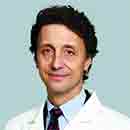Rosacea Symptoms Continue To Occur Amid Antibiotic Treatment
DEAR DR. ROACH: I am a 61-year-old male in excellent health. I do not drink alcohol. About four months ago, I noticed a dramatic change in my facial complexion. I developed an acne-like rash, primarily on my right cheek. I also developed two pretty large pimples, one under my left eye and one on my right check.
The dermatologist diagnosed rosacea and prescribed doxycycline, which seemed to have no effect. I started washing my face daily with tea tree oil, and the rash mostly cleared up. After several weeks, the pimples went away. However, I now have noticeable redness and bumps on my nose. Occasionally these bumps weep a clear fluid that crusts over. They heal without scarring.
I have no history of acne or other skin conditions, and no one in my family has ever been diagnosed with rosacea. Is there another possible explanation for this change in my complexion? Should I see my regular doctor for an evaluation or just learn to live with this? -- J.K.
ANSWER: Rosacea is a common skin disorder with variable presentations. Its cause is not well-understood, but immune system dysfunction, bacterial growth and skin mites all may have a role. It is very likely that you do have rosacea as a dermatologist isn't likely to make a mistake, and the symptoms you describe are all consistent with rosacea.
Antibiotics like doxycycline are used to treat rosacea, although I typically start with topical treatments rather than oral antibiotics. They do take time to work -- at least two to four weeks -- and they may not reach their full effectiveness for two to three months.
Since tea tree oil isn't proven to be an effective treatment for rosacea, I do wonder if the apparent benefit you had was the antibiotic finally kicking in, but it's certainly possible the tea tree oil was effective for you. Because I have seen significant contact allergy to tea tree oil, I do not normally recommend this treatment, especially undiluted tea tree oil.
Redness and bumps on the nose are called rhinophyma. These changes have long been considered to be alcohol-related, but this is mistaken. They are very common with rosacea, especially longstanding rosacea.
Dermatologists have much more experience with treating rosacea than regular doctors, and with my own patients, if my first-line treatments aren't effective, I refer them to a dermatologist. I would say it's time for you to go back to the dermatologist (or find a new one).
DEAR DR. ROACH: I am 75 and have multiple health issues. Recently I had shingles although I was vaccinated. I received both shots of the newer vaccine. Should I get vaccinated again? -- M.L.
ANSWER: Yours is an unusual situation without specific guidance from the literature or expert groups. Were you my patient, I would admit that we don't have an evidence-based answer. I would discuss the downsides (a sore arm and possible systemic effects such as fever, muscle aches and fatigue) as well as the upsides (a possible but not definitive decreased risk of shingles).
The likelihood that you would get another case of shingles, with or without another vaccination series, is very small. There's also an even smaller risk of developing shingles complications. It all depends on which risk is more important to you: side effects from the vaccine or a bad outcome from shingles. A repeat vaccine might not be covered by insurance.
I'd respect whichever decision you make.
========
Dr. Roach regrets that he is unable to answer individual letters, but will incorporate them in the column whenever possible. Readers may email questions to ToYourGoodHealth@med.cornell.edu.
(c) 2025 North America Syndicate Inc.
All Rights Reserved









Comments